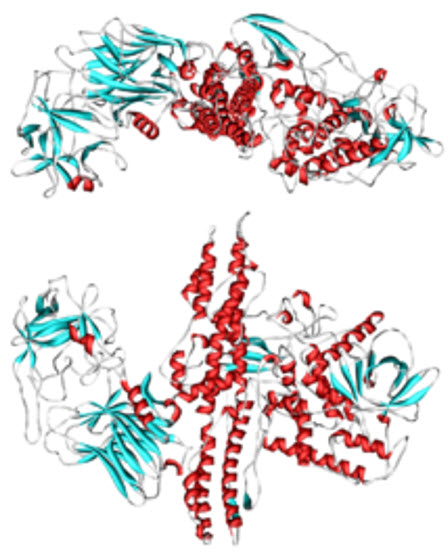อนุสัญญาห้ามอาวุธเคมี: บริบทการเรียนการสอนเคมีที่สะท้อนธรรมชาติของวิทยาศาสตร์
Main Article Content
Abstract
Suthida Chamrat
รับบทความ: 2 ตุลาคม 2559; ยอมรับตีพิมพ์: 20 สิงหาคม 2560
บทคัดย่อ
บทความนี้นำเสนอเนื้อหาและแนวทางการนำอนุสัญญาห้ามอาวุธเคมีไปใช้ในบริบทการเรียนการสอนโดยอนุสัญญาห้ามอาวุธเคมีเป็นข้อตกลงระหว่างประเทศเพื่อการปลดและทำลายอาวุธเคมี รวมทั้งสร้างความเข้าใจและความตระหนักในการใช้สารเคมีที่เป็นพิษอย่างมั่นคงและปลอดภัย ซึ่งประเทศไทยในฐานะรัฐภาคีที่อยู่ภายใต้อนุสัญญานี้ได้ให้สัตยาบันมาตั้งแต่ พ.ศ. 2545 ทั้งนี้เนื้อหาของอนุสัญญาห้ามอาวุธเคมีมีความเกี่ยวข้องโดยตรงกับแนวคิดทางเคมี สารเคมี การจัดการสารเคมี การจัดการเรียนการสอนในเนื้อหาที่เกี่ยวกับสารและการเปลี่ยนแปลงสามารถใช้อนุสัญญาห้ามอาวุธเคมีเป็นบริบทและแนวทางเพื่อจัดกิจกรรมการเรียนรู้แก่ผู้เรียนผ่านเรื่องราวประวัติทางวิทยาศาสตร์ของการใช้อาวุธเคมีและสารเคมีที่เป็นพิษในอดีตและปัจจุบัน บทความนี้ยังนำเสนอประวัติความเป็นมาและบทบัญญัติของอนุสัญญา แนวคิดหลักที่เกี่ยวข้องกับเคมี กฎหมาย สังคมและผลกระทบที่เกิดขึ้น รวมทั้งประเด็นธรรมชาติของวิทยาศาสตร์ที่เกี่ยวข้อง นอกจากนี้ยังนำเสนอแนวทางในการจัดการเรียนการสอน ได้แก่ การเรียนรู้ที่ใช้บริบทเป็นฐาน แนวการจัดการเรียนรู้แบบวิทยาศาสตร์ เทคโนโลยี สังคมและสิ่งแวดล้อม และแนวการจัดการเรียนรู้โดยใช้ประวัติศาสตร์ เพื่อสะท้อนธรรมชาติของวิทยาศาสตร์ในประเด็น ปฏิสัมพันธ์ระหว่างวิทยาศาสตร์กับสังคม รวมทั้งกิจการทางวิทยาศาสตร์ขององค์กรที่เกี่ยวข้องกับองค์ความรู้เรื่องสารเคมีและอาวุธเคมี
คำสำคัญ: การเรียนรู้ที่ใช้บริบทเป็นฐาน ธรรมชาติของวิทยาศาสตร์ แนวการจัดการเรียนรู้โดยใช้ประวัติศาสตร์ วิทยาศาสตร์เทคโนโลยี สังคมและสิ่งแวดล้อม อาวุธเคมี
Abstract
Chemical Weapons Convention (CWC) is the international agreement that determine on disarmament and destruction of chemical weapons including the outreach understanding and concern of chemical security and safe management of toxic chemicals. Thailand as a State Party has deposited this Convention since 2002. The contents of CWC directly relate to the concepts of chemistry: chemical and chemical management. Currently learning and teaching matter and its properties could use CWC as the context and framework for design leaning activities by the agenda of historical approach via history and present of chemical weapons or toxic chemical usage. This article provides the information of the history and provisions of The Convention, together with the core concepts of chemistry, law, society and its effects and the relevance to nature of science. Furthermore, there are the discussion of approaches for teaching and learning with CWC namely Context-based learning, Science Technology Society and Environment (STSE) and Historical Approach which reflect nature of science in the aspect of Science – society interaction, scientific enterprise with the issues of chemicals and chemical weapons.
Keywords: Context–based learning, Nature of science, Historical approach, Science technology and society, Chemical weapon
Downloads
Article Details

This work is licensed under a Creative Commons Attribution-NonCommercial 4.0 International License.
References
Bennett, J., Lubben, F., and Hogarth, S. (2007). Bringing science to life: A synthesis of the research evidence on the effects of context-based and STS approaches to science teaching. Science Education 91(3): 347-370.
Bureau of Academic Affairs and Educational Standards. (2012). Indicators and Core Concept for Sciences Subject Area. Bangkok: Agriculture Cooperative of Thailand. (in Thai)
Department of Veterans Affairs (2006). Health Effects from Chemical, Biological, and Radiological Weapons. Retrieved from http://www.publichealthva.gov/docs/vhi/chem_bio_rad_weapons.pdf, August 15, 2016.
Devawongse Varopakarn Institute of Foreign Affairs. (n.d.) Vocabulary – Abbreviation. Retrieved form http://www.mfa.go.th/dvifa/ th/code, August 1, 2016. (in Thai)
Erbguth, F. J. (2009). The pretherapeutic history of botulinum toxin. In Truong, D., Dress-er, D. and Hallett, D. (Ed.), Manual of Botulinum Toxin Therapy. (pp. 1–10). USA: Cambridge University.
Forman, J. E., Monitor, S. T., and Board, S. A. (2015). Chemistry and diplomacy: science education and science communication in disarmament. Fall 2015 ACS CHED CCCE Newsletter 1: 1–17.
Gilbert, J. K. (2006). On the nature of “context” in chemical education. International Journal of Science Education 28(9): 957–976.
Hague, T. (2013). IUPAC, OPCW, and the Chemical Weapons Convention, (August), 4–8 Organic Chemistry Principles in Context: A Story Telling Historical Approach. (2013), 400045.
Matthews, M. R., Cobern, W. W., Loving, C. C., and Kraus, R. (1994). Science Teaching: The role of History and Philosophy of Science. London: Routledge.
Office of National Implementation for the Chem-ical. (2011). Convention on the Prohibition of the Development, Production, Stockpiling and Use of Chemical Weapons and on their Destruction B.E. 2536. Retrieved form http://na-cwc.diw. go.th/edoc-detail-6.html, June 1, 2016. (in Thai)
OPCW–UPAC. (2013). Multiple Uses of Chemicals. Retrieved form http://multiple.kcvs. ca/site/index.html#, June 15, 2016.
Organisation for Economic Co-operation and Development (OECD). (2013). PISA 2015 Draft Science Framework. Paris: OECD. Retrieved from http://www.oecd.org/pisapisaproducts/Draft PISA 2015 Science Framework.pdf, September 15, 2016.
Organisation for the Prohibition of Chemical Weapons. (2005). Convention on the Prohibition of the Development, Produแction, Stockpiling and Use of Chemical Weapons and on their Destruction. Hague: The Technical Secretariat of the Organisation for the Prohibition of Chemical Weapons.
Organisation for the Prohibition of Chemical Weapons. (2014). Education and: Promoting a Culture of Responsible Chemistry Final Report of the Scientific Ad-visory Board’s Temporary Working Group. Retrieved from http://www.opcw.org/index.phpeID=dam_frontend_push&docID=18014, June 1, 2016.
Pearson, G. S., and Mahaffy, P. (2006). Education, outreach, and codes of conduct to further the norms and obligations of the Chemical Weapons Convention (IUPAC technical report). Pure and Applied Chemistry 78(11): 2169–2192.
Pedretti, E. (2003). Teaching science, technology, society and environment (STSE) education. In Zeidler, D. L. (Ed.), The Role of Moral Reasoning on Socioscientific Issues and Discourse in Science Education (pp. 219–239). Dordrecht: Kluwer Academic.
Pita, R., and Domingo, J. (2014). The use of chemical weapons in the Syrian conflict. Toxics 2(3): 391–402.
Sasithep, P. (2014). I used outside classroom learning resources for enhancing pre–service science teachers’ linking their knowledge about teaching science based on science, technology and society (STS) approach into practice. Journal of Research Unit on Science, Technology and Environment for Learning 5(1): 77–85. (in Thai)
Schantz, E. J., and Johnson, E. A. (1992). Properties and use of botulinum toxin and other microbial neurotoxins in medicine. Microbiological reviews 56(1): 80–99.
The Nobel Peace Prize 2013. (2014). Nobel Media AB 2014. Retrieved from http://www.nobelprize.org/nobel_prizes/peace/laureates/2013/, June 1, 2016.
Tolvanen, S., Jansson, J., Vesterinen, V. M., and Aksela, M. (2014). How to use historical approach to teach nature of science in chemistry education? Science & Education 23(8): 1605–1636.
Winai, W. (2008). Botulism. Thai Journal of Toxicology 23(2): 19–24. (in Thai)
